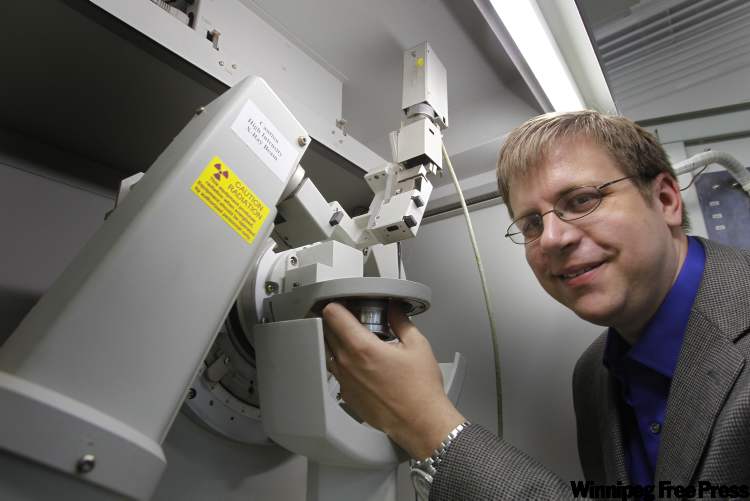Locals find loophole in laws of physics
Team led by U of W scientist works on monopole
Advertisement
Read this article for free:
or
Already have an account? Log in here »
To continue reading, please subscribe:
Monthly Digital Subscription
$0 for the first 4 weeks*
- Enjoy unlimited reading on winnipegfreepress.com
- Read the E-Edition, our digital replica newspaper
- Access News Break, our award-winning app
- Play interactive puzzles
*No charge for 4 weeks then price increases to the regular rate of $19.00 plus GST every four weeks. Offer available to new and qualified returning subscribers only. Cancel any time.
Monthly Digital Subscription
$4.75/week*
- Enjoy unlimited reading on winnipegfreepress.com
- Read the E-Edition, our digital replica newspaper
- Access News Break, our award-winning app
- Play interactive puzzles
*Billed as $19 plus GST every four weeks. Cancel any time.
To continue reading, please subscribe:
Add Free Press access to your Brandon Sun subscription for only an additional
$1 for the first 4 weeks*
*Your next subscription payment will increase by $1.00 and you will be charged $16.99 plus GST for four weeks. After four weeks, your payment will increase to $23.99 plus GST every four weeks.
Read unlimited articles for free today:
or
Already have an account? Log in here »
Hey there, time traveller!
This article was published 21/09/2011 (5182 days ago), so information in it may no longer be current.
A University of Winnipeg scientist leads an international team of researchers who may have found a loophole in the laws of physics.
Magnetricity could have practical applications down the road to store data in computers or conduct electricity, said U of W chemistry Prof. Chris Wiebe.
“All of magnetic (knowledge) is based on ‘You can’t have a single pole,’ ” explained Wiebe, a graduate of the U of W and Transcona Collegiate. There is always a north pole and a south pole, and a single pole cannot occur naturally.

So say the laws of physics, but…
“There is a way you can make a single monopole.”
That’s been around in theory for more than a century, but the team believes it has created a monopole using a laboratory at Florida State University and the PRIME (Prairie Research Institute for Materials and Energy) at the U of W’s new science complex.
“It corresponds to the theory beautifully,” Wiebe said. “The eureka moment came when we first learned how to make these new materials under pressure.”
The theory was also postulated by a character on the TV show The Big Bang Theory, Wiebe pointed out.
The scientists — including University of Manitoba graduate student Harlyn Silverstein — use crystals about one centimetre long subjected to enormous pressure to test its theories.
“We have some fancy equipment here at the university to grow crystals,” Wiebe said. “They involve rare earth elements — they generate these huge magnetic fields. We haven’t physically seen them; we infer from our measurements that they exist.”
The research suggests monopoles could be used to conduct electricity through magnetism, though “that’s decades down the road,” Wiebe said.
Much sooner, magnetricity could prove to be able to store memory in computers, he said.
Wiebe moved home from an academic post at Florida State University partly because PRIME had received a $1 million grant from the Canadian Foundation for Innovation to build a state-of-the-art materials laboratory.
Further tests will hopefully prove the existence of monopoles and magnetricity, he said. “We have an experiment in France coming up,” in which they will shoot neutron particles at the materials in hopes of getting an atomic picture.
The experiment could be conducted at the U of W if it gets further major funding to build a proposed physics building on Langside Street, he said.
Their work is described in the journal Nature Communications at www.nature.com/ncomms/index.html
nick.martin@freepress.mb.ca

Nick Martin
Former Free Press reporter Nick Martin, who wrote the monthly suspense column in the books section and was prolific in his standalone reviews of mystery/thriller novels, died Oct. 15 at age 77 while on holiday in Edinburgh, Scotland.
Our newsroom depends on a growing audience of readers to power our journalism. If you are not a paid reader, please consider becoming a subscriber.
Our newsroom depends on its audience of readers to power our journalism. Thank you for your support.

